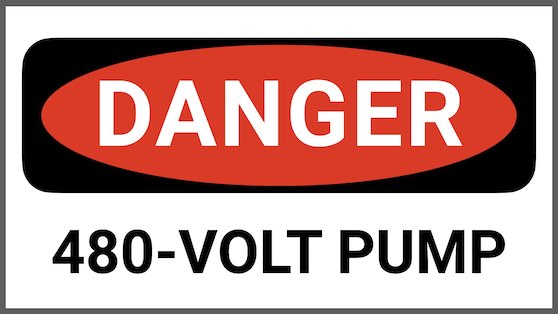
Articles
Features
Articles
Code File
Codes & Standards
Requirements for irrigation systems – Code File, June 2023
July 5, 2023 | By David Pilon

July 5, 2023 – Irrigation equipment and systems are frequently used along our waterways by nearby farming and agriculture businesses, and we are seeing more of them pop up across the province.
This increase has prompted Technical Safety Authority, Saskatchewan to double its efforts when informing dealers, farmers, contractors, manufacturers, etc., about the requirements for these systems.
The types of irrigation installations vary by manufacturer and by need: some are placed permanently into a well-like structure along the bank of the waterway; others are installed on carts and wheeled into the water and connected as required; still others are situated on float assemblies that keep the pump close to the surface.
Typically, irrigation pumps and equipment are manufactured to operate at 480 V. As such, this higher-voltage equipment poses a potential safety hazard to the public when it is installed in or on public or private waterways.
When irrigation season is over, the pumps are generally removed from waterways and often stored where they were used; meaning, the cables are exposed to animals, weather, and other sources of wear and tear—including the process of installing and removing them.
First and foremost, irrigation systems in Saskatchewan must be maintained by licensed electrical contractors, who are able to identify and correct any potential safety hazards.
Because they are located on public waterways, and they exceed 150V volts-to-ground, CE Code–Part I, Rule 26-956(2) requires that a request be submitted every year to the chief electrical inspector for a deviation to allow those systems to be reintroduced into a body of water.
This request ensures the systems are being maintained by a licensed electrical contractor to reduce the possibility of a hazard in or on the water, and that any necessary repairs are being completed prior to installation.
In Saskatchewan, we require that plans be submitted for all new installations. This helps ensure the contractor/designer/manufacturer has considered things such as the motor FLA (full load amps), equipment ratings and approvals, cable sizing, and voltage drop.
Depending on the size of the installation, we may also require a pre-energization inspection to ensure all issues have been effectively addressed prior to system activation.
Approval markings on the irrigation equipment must meet the requirements of Rule 2-024, but this has not always been the case for some equipment coming into Canada. (Now at the mercy of the manufacturer, owners and contractors can only cross their fingers and hope for an expedient approval so they can install the equipment on time.)
All irrigation pumps installed in or on the water must be GFCI-protected. This is performed in the controllers and ensures the pumps can function without creating a hazard.
Pumps installed in or on the water must be isolated from the public and marked with a buoy. Those buoys, meantime, must meet Transport Canada’s Navigable Waters Act as well as the “Private Buoy Regulations” (MORE INFO).
When they are susceptible to damage from people or animals, pump controllers and cables installed on the shore must be protected by fencing or other acceptable means. Again, this helps reduce hazards around irrigation sites, especially for swimmers and boaters.
We’ve seen fishermen go out onto floating irrigation structures (or tie their boats to them) without realizing the potential for injury—not just from the electrical hazards, but potentially from the pump intakes as well.
This is why we require a sign reading “DANGER 480-VOLT PUMP” that is clearly visible from both land and water. It should be located at the pump and the controller structure facing the water, and at any access point to platforms.

David Pilon is manager, Electrical Inspections, at Technical Safety Authority, Saskatchewan (TSASK). He also serves as vice-chair of the Canadian Certified Electrical Inspector (CCEI) committee of the International Association of Electrical Inspectors (IAEI), Canadian Section. He can be reached at david.pilon@tsask.ca.
You’ll find all Back Issues of Electrical Business Magazine in our Digital Archive.
Print this page
